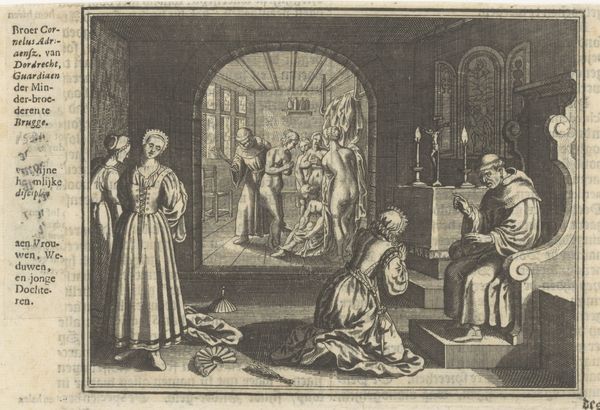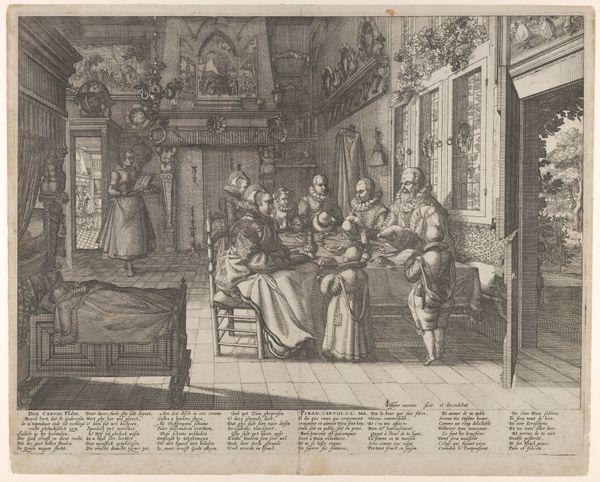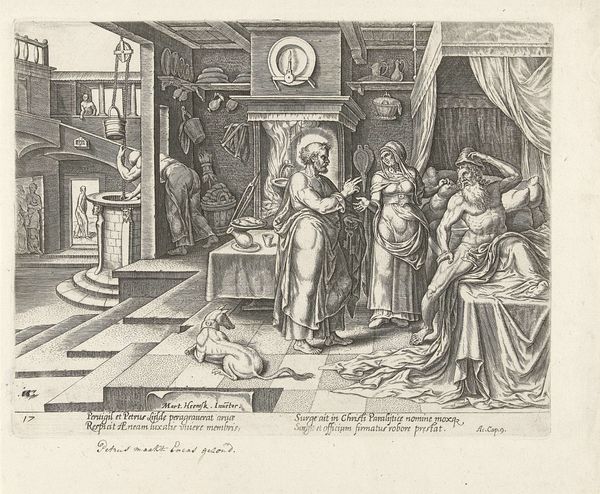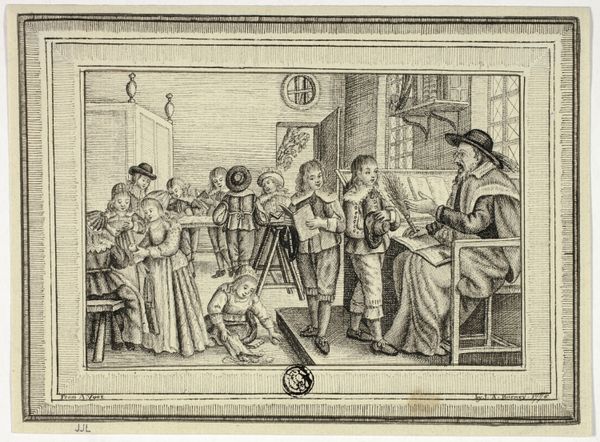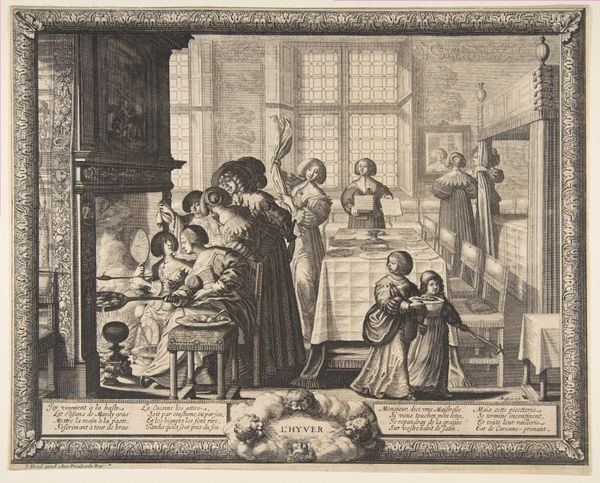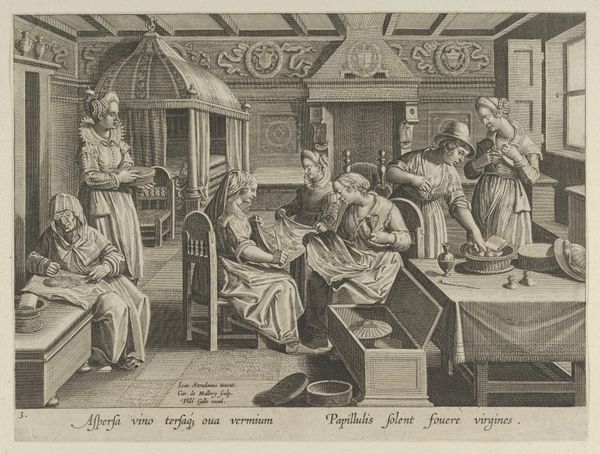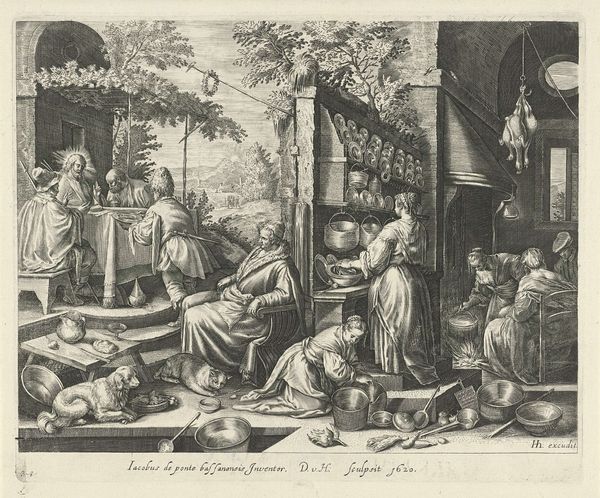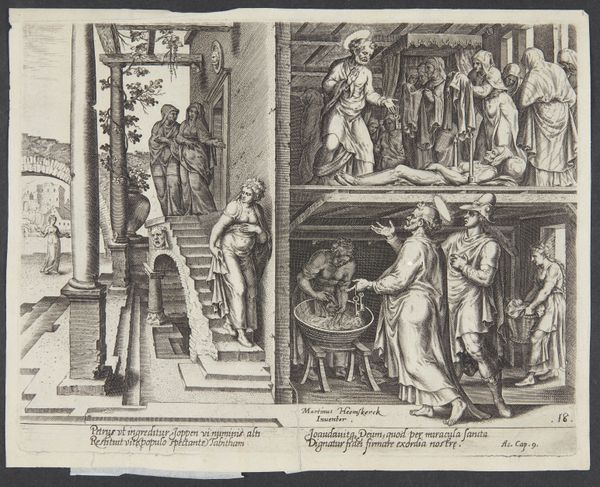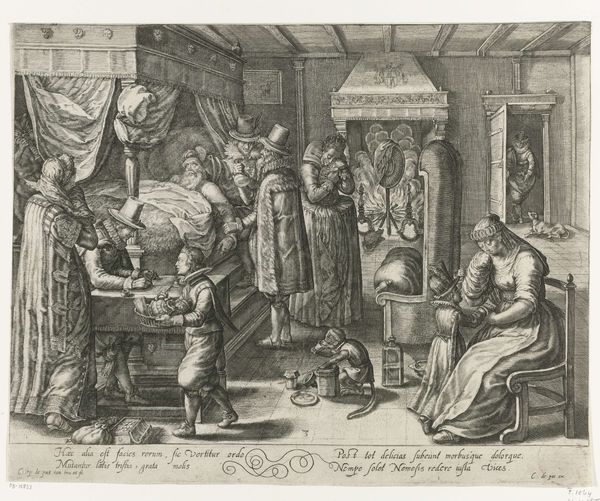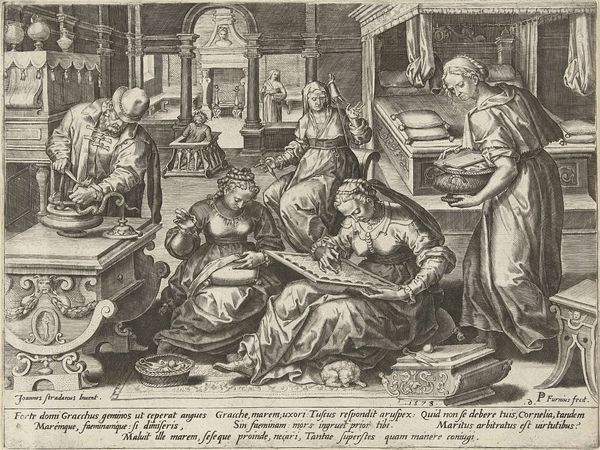![The Silkworm Eggs Spread Out On Shelves, Plate 4 from "The Introduction of the Silkworm" [Vermis Sericus] by Karel van Mallery](/_next/image?url=https%3A%2F%2Fd2w8kbdekdi1gv.cloudfront.net%2FeyJidWNrZXQiOiAiYXJ0ZXJhLWltYWdlcy1idWNrZXQiLCAia2V5IjogImFydHdvcmtzL2U3M2I0MGY3LWJhOTMtNGM4Ny05YzczLWQ1ZjI2MjdkOTRmZi9lNzNiNDBmNy1iYTkzLTRjODctOWM3My1kNWYyNjI3ZDk0ZmZfZnVsbC5qcGciLCAiZWRpdHMiOiB7InJlc2l6ZSI6IHsid2lkdGgiOiAxOTIwLCAiaGVpZ2h0IjogMTkyMCwgImZpdCI6ICJpbnNpZGUifX19&w=3840&q=75)
The Silkworm Eggs Spread Out On Shelves, Plate 4 from "The Introduction of the Silkworm" [Vermis Sericus] 1595
0:00
0:00
drawing, print, engraving
#
drawing
#
aged paper
#
toned paper
#
light pencil work
# print
#
old engraving style
#
figuration
#
men
#
genre-painting
#
history-painting
#
northern-renaissance
#
engraving
Dimensions: Sheet: 7 7/8 × 10 9/16 in. (20 × 26.8 cm)
Copyright: Public Domain
Curator: Here we have a fascinating print, dating to 1595, titled "The Silkworm Eggs Spread Out On Shelves," plate 4 from the series "The Introduction of the Silkworm." It’s by Karel van Mallery and currently resides here at the Metropolitan Museum. Editor: My first impression is the intense labour suggested by this busy interior; so many figures, engaged in different repetitive tasks. It's fascinating to think about all the material transformation that went into silk production at this period. Curator: Absolutely. Consider that silkworm cultivation and silk production were incredibly important industries, subject to specific regulation, trade, and often considered as specialized female labor. This print is one of several illustrating the various stages, aiming to celebrate and inform about it. The prints would be circulated to share new and relevant imagery, especially when technologies were developing and techniques sought wider circulation. Editor: You're right, and that circulation aspect highlights an interesting tension. It's trying to communicate the complex processes inherent in silk production, almost as if rendering visible what is otherwise obscure – labour. But is this celebratory? Look at the limited role of light pencil work or tonal variations across a scene that almost lacks affect for its many protagonists. Curator: Well, engravings, particularly at this time, often served a didactic purpose. It wasn’t necessarily about celebrating the artistry of the workers themselves but showcasing the system, demonstrating the supposed 'advancement' in knowledge to elite society. How to optimize a new manufacturing process to the marketplace, say? Editor: Perhaps the silkworms are the main actors. Consider all that is required to coax those creatures to transform one material into another! You have to hand it to them and their complex digestive and transformation abilities. And then there is that final, woven product we fetishize with elegance and luxury, despite not even understanding its origins in insect secretion! Curator: An interesting consideration, certainly. This piece acts, for me, as a lens through which we see early knowledge economies playing out, reflecting specific assumptions about labor and societal progression. Editor: I’m left thinking about our complex relationship to materials; our ongoing and collective extraction, refining, consuming… Hopefully we will become wiser in time.
Comments
No comments
Be the first to comment and join the conversation on the ultimate creative platform.

